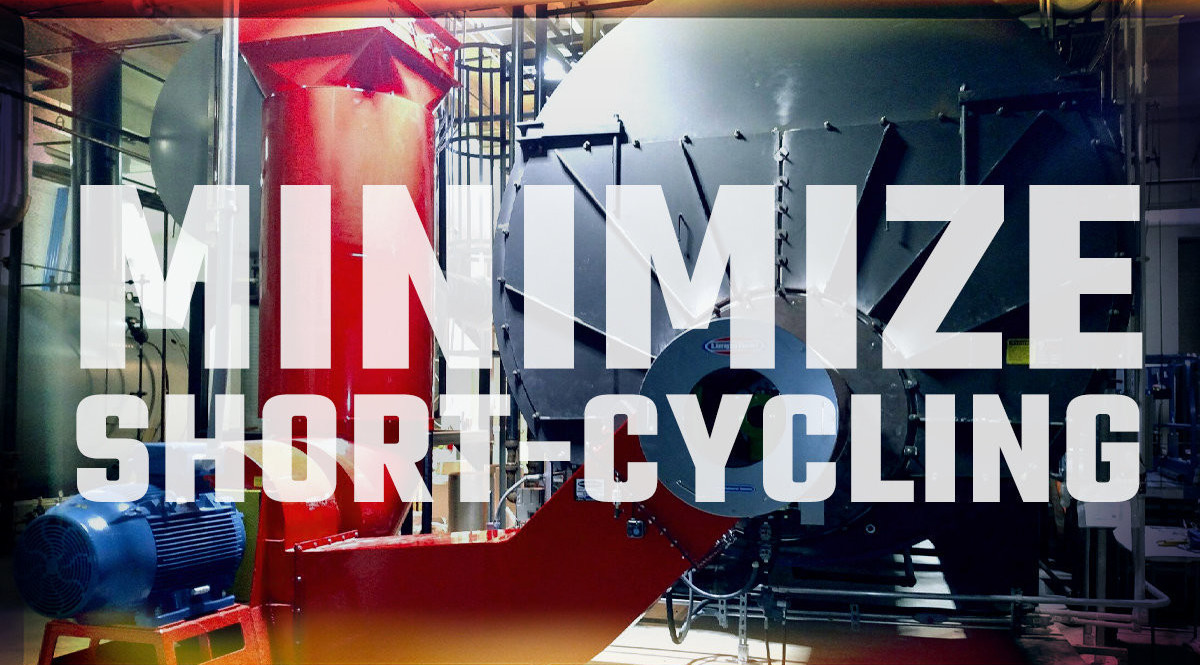A boiler cycle includes a firing interval, a postpurge, an idle period, a prepurge and a return to firing. Boiler short cycling takes place when an oversized boiler quickly fulfills process or space heating demands and then shuts down until heat is required again.
Boiler efficiency can be calculated over the cycle duration by taking the useful heat provided by the boiler and dividing it by the useful heat plus losses. Boiler efficiency is reduced when short cycling occurs or when several boilers are operating at low firing rates.
Boilers can be too large for the required processes for several reasons. It could be that process heating demands fluctuate over time or additional capacity was added to restart a facility quickly after being closed overnight. Boilers may have been installed based on plans for additions and expansions to a facility that never happened. In addition, concessions may not have been made for heat contributions from other sources such as lights and equipment.
If a facility has installed energy conservation or is employing heat recovery methods, the heat demand can be reduced and therefore a facility could have multiple boilers operating at several times the maximum expected capacity.
Suggestions
• Determine the efficiency and operating cost of each boiler
• Adopt a control strategy for maximizing boiler operations
• Avoid short cycling by purchasing a burner with a high turndown ratio or by adding a small boiler to the boiler house to provide better flexibility and high efficiency at all loads
A facility can realize fuel savings by installing a smaller boiler to meet the average loads or by re-engineering the power plant to consist of several small boilers. Utilizing several small boilers can give operators the reliability and flexibility to follow load swings without over-firing or short cycling. Facilities with large seasonal variations in steam use can utilize small boilers when demand drops rather than operating large boilers all year round.
Example
If a 1,500 horsepower (hp) boiler (1 hp = 33,475 Btu/ hr) that has a cycle efficiency of 72.7% is replaced with a 600 horsepower boiler with a cycle efficiency of 78.8%, a facility can see a fractional fuel savings of 7.7% annually. If the 1,500 horsepower boiler used 200,000 MMBtu of fuel annually, the savings from switching to the smaller boiler (assuming a fuel cost of $8 per MMBtu) would be $123,200.
Set Points & Burner Design
Another way to prevent frequent cycling is by adjusting the set points. If your set points are so tight the temperature has to remain within a few degrees or the pressure must stay within a couple psi, your boiler is apt to cycle more often. If your heating load or production process can accept a wider temperature swing or a larger pressure differential, then your boiler can run longer during operation and, likewise, stay off longer during low-load conditions. Of course, your specific application may demand adhering to specific values, but if there is wiggle room that allows your set point to fluctuate, your systems efficiency will be increased.
Burner design is another stone worth looking under. Some facilities opt to simply replace the burner instead of buying and installing a new boiler. A burner with a higher turn-down ratio can drop the boiler’s low-fire rate and carry a smaller load without cycling off – a fully modulating burner allows more flexibility in the firing rate to handle a wide range of loads in between the typical low and high fire points.
Operating Multiple Boilers
When operating multiple boilers, the most efficient ones should be brought online as loads increase and the less-efficient boilers should be taken offline first as the loads decrease. Shift loads from one boiler to another as emissions, operations or firing rate limits change, using boilers where steam production is less costly.
Automatic controllers can be used to calculate the incremental costs of a change in load for each boiler in the facility. This shifting of loads can optimize the efficiency of boiler operations and reduce energy costs. When it is possible, loads should be scheduled to help maximize the performance of the entire boiler system.
A powerhouse that operates multiple boilers that are simultaneously operating at low-fire conditions can realize energy savings opportunities for utilizing these proper boiler allocation strategies.
Information for this tip was taken from the U.S. Department of Energy’s (DOE) Best Practices Website.
